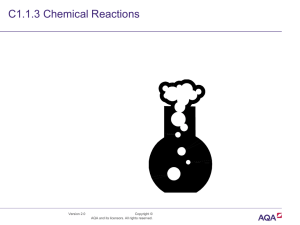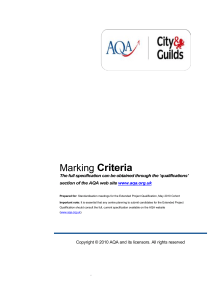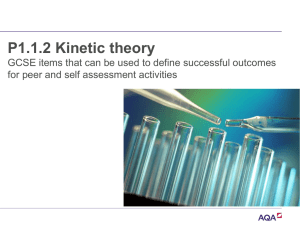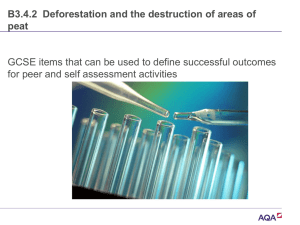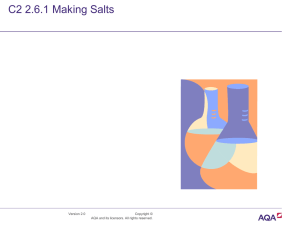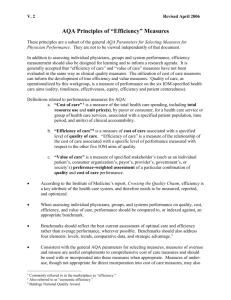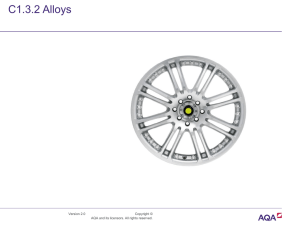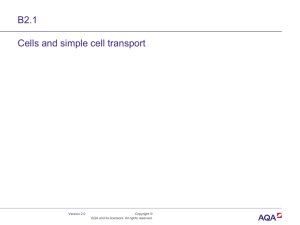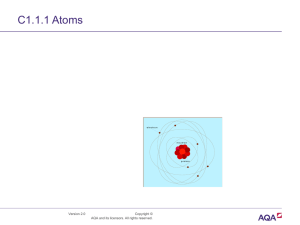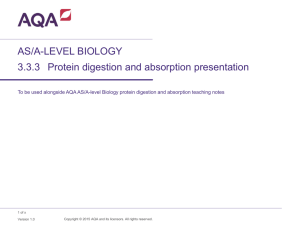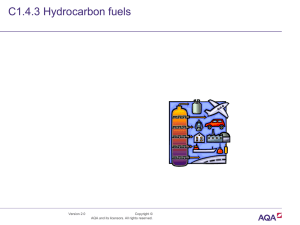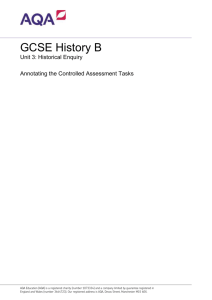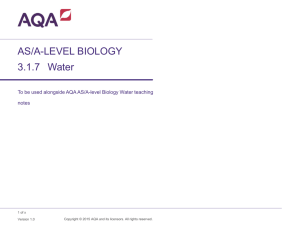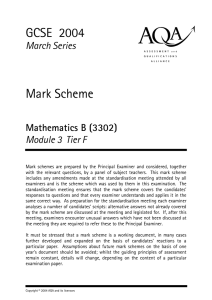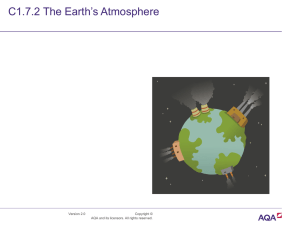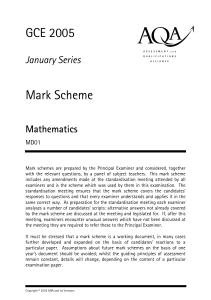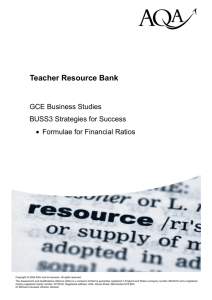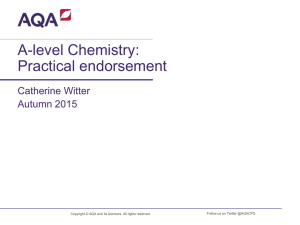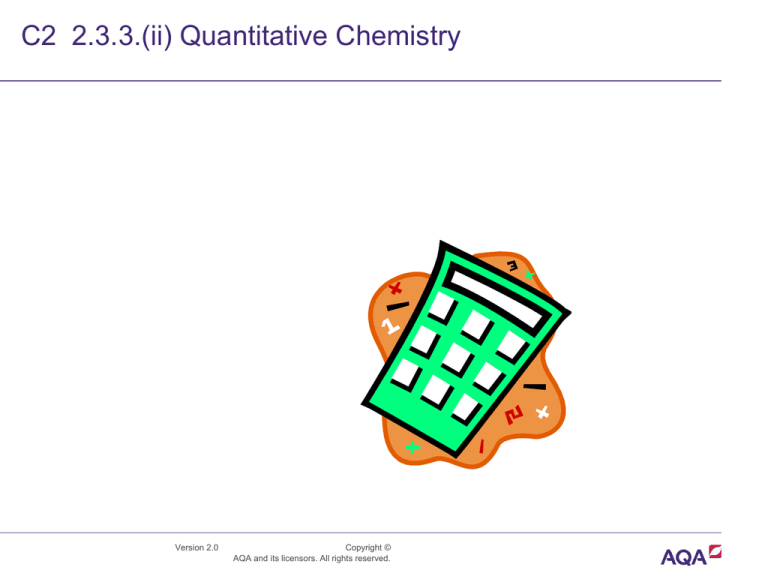
C2 2.3.3.(ii) Quantitative Chemistry
Version 2.0
Copyright ©
AQA and its licensors. All rights reserved.
Using Exam pro items to support successful
outcomes
•
C2 2.3.3.(ii)
• Learners will be able to test their progress against learning
outcomes using questions from past AQA GCSE
examinations.
Version 2.0
Copyright © AQA and its
licensors. All rights reserved.
Higher Tier June 12, 6
• C2 2.3.3.(ii)
Version 2.0
Copyright © AQA and its
licensors. All rights reserved.
• C2 2.3.3.(ii)
Version 2.0
Copyright © AQA and its
licensors. All rights reserved.
•
Version 2.0
Copyright © AQA and its
licensors. All rights reserved.
C2 2.3.3.(ii)
Mark scheme- Higher
•
C2 2.3.3.(ii)
Q
Answer
Extra Information
Mark
(a)
Because calcium is +2 and hydroxide is -1
Or
To make the compound neutral (in terms of charges)
Accept balance the charges
1
Allow calcium needs to lose 2
electrons and hydroxide needs
to gain one electron
(b)
Particles of size 1- 100nm
Or particles with a few hundred atoms /ions
Or particles with a high surface are ( to volume ration)
Or as different properties to ‘normal’ size particles of the
same substance
(c)
Mr CaO = 56
And Mr Ca(OH)2 = 74
2/56 (x74) or 0.036 (x74)
Or
74/56 (x2) or 1.3 (214…) (x2)
2.6(428….) in range 2.6 to 2.96
Version 2.0
Allow clear comparison to
‘normal’ size particles
1
1
1
Allow ecf from step 1
Copyright © AQA and its
licensors. All rights reserved.
Correct answer with or without
working gains 3 marks
Allow ecf carried through from
step 1
Ignore final rounding to 3
1
Total
5
•
C2 2.3.3.(ii)

